Technical aspects of Providing CFD Liquidity
In the dynamic world of financial markets, liquidity provision and market making are integral components of multi-asset brokers, particularly those dealing with Contract for Difference (CFD) instruments.which require a robust framework of liquidity to facilitate trading without the physical ownership of assets. This article explores the technical aspects of CFD liquidity, focusing on the roles of liquidity providers and market makers and highlighting their pivotal role in shaping a sophisticated and competitive trading ecosystem.
Understanding CFDs and Liquidity Provision
Contract for Difference (CFD) instruments are derivatives that enable traders to speculate on the price movements of various assets without owning them physically. This flexibility in trading across different markets—such as stocks, commodities, currencies, indices, and cryptocurrencies—positions CFDs as crucial element for multi-asset brokers.
Liquidity providers, entities or institutions facilitating the buying and selling of financial instruments, are paramount for CFD-centric Forex brokers. These Liquidity providers offer a reservoir of assets, ensuring efficient order execution and optimal pricing, which are critical for the success of Forex or crypto brokers.
Types of Liquidity Providers
The financial industry categorizes liquidity providers into “Tier-1” and “Tier-2,” especially in the context of forex and CFD trading. These tiers represent different levels of liquidity providers based on factors such as size, financial strength, and market influence.
- Tier-1 Liquidity Providers: These include large financial institutions and banks offering liquidity for various financial instruments. Multi-asset brokers seek relationships with Tier-1 liquidity providers to ensure access to deep and competitive markets. Major global banks such as JP Morgan Chase, Bank of America, Citigroup, Deutsche Bank, and UBS are typical Tier-1 providers.
- Tier-2 Liquidity Providers: When brokers don’t generate sufficient trading volumes to qualify for Tier-1 liquidity, they often turn to Tier-2 providers, commonly known as Prime Brokers. These providers act as intermediaries, linking smaller market participants with Tier-1 liquidity providers.
- Prime of Prime (PoP) Liquidity Providers: Acting as intermediaries between Tier-1 institutions and retail brokers or smaller institutional clients, PoP providers leverage their expertise to consolidate liquidity from various sources. They offer institutional-grade trading conditions, tighter spreads, and improved execution speeds through strategic partnerships with Tier-1 banks.
Characteristics of Liquidity Providers
Tier-1 Providers
Tier-1 liquidity providers, such as major global banks like JP Morgan Chase, Bank of America, Citigroup, Deutsche Bank, and UBS, are the cornerstone of financial markets. These large, well-established institutions offer deep liquidity, ensuring that there is an ample supply of financial instruments available for trading. Their direct access to the interbank market allows them to execute trades at the most competitive prices, providing the best bid and ask prices and contributing to tighter spreads and more efficient trading.
With their global reach, Tier-1 providers operate across multiple financial markets and asset classes, supporting a wide range of trading activities around the clock. Their robust balance sheets and financial strength enable them to withstand market fluctuations and economic uncertainties, instilling confidence in market participants. Furthermore, their significant market influence helps maintain stability, as their trading activities can impact overall market liquidity and pricing.
Tier-2 Providers
Tier-2 liquidity providers, while still substantial, operate on a smaller scale compared to Tier-1 institutions. They often specialize in particular regions or niche markets, offering tailored liquidity solutions that cater to specific needs. Examples of Tier-2 providers include regional banks, smaller financial institutions, and specialized Prime Brokers.
These providers act as intermediaries between Tier-1 providers and smaller market participants, such as retail brokers. They aggregate liquidity from various sources, including Tier-1 providers, and offer it to their clients, bridging the gap between large liquidity pools and smaller traders. Despite their smaller scale, Tier-2 providers contribute valuable liquidity to their specialized areas, maintaining market efficiency and enabling smaller brokers to access competitive trading conditions.
Additionally, Tier-2 providers are known for their flexibility and agility. Their smaller size allows them to quickly adapt to new regulations, market demands, and technological advancements, providing a competitive edge in rapidly evolving financial markets.
Key Technologies in Liquidity Aggregation
Liquidity aggregation revolutionizes trading by consolidating buy and sell offers from various sources into a single, comprehensive pool of liquidity. This innovative approach enhances trading in several ways:
1. Tighter Spreads: Liquidity aggregation fosters heightened competition among liquidity providers, naturally narrowing spreads—the difference between the bid and ask prices. With more competitive pricing, traders benefit from reduced transaction costs and increased profitability.
2. Faster Execution: The availability of more offers through liquidity aggregation facilitates swift and efficient trade executions. Traders can capitalize on market opportunities promptly, leading to improved trade fill rates and enhanced overall trading experience.
3. Increased Order Size: Liquidity aggregation mitigates the risk of slippage, particularly for larger orders. By pooling liquidity from multiple sources, traders can execute sizable orders with minimal adverse price movements, thus maximizing order size and optimizing trading outcomes.
4. Reduced Reliance on Single Providers: Diversification is a cornerstone of risk management in trading, and liquidity aggregation plays a pivotal role in achieving it. By sourcing liquidity from multiple providers, traders reduce their dependence on any single provider, minimizing the risk of disruptions or issues associated with individual liquidity sources.
Technologies involved include:
- Smart Order Routing (SOR): Algorithms that route orders to the best provider based on price and execution conditions.
- Price Aggregation Engines: Systems that combine quotes from multiple providers into a unified order book.
- Latency Management: Technology ensuring minimal delays between receiving quotes and routing orders.
Choosing a Liquidity Provider for Your Forex Brokerage
Selecting a CFD liquidity provider is a critical decision for brokers. Key considerations include:
- Regulation and Compliance: Ensure the provider is regulated by reputable financial authorities.
- Financial Stability: Assess the provider’s financial health and reputation.
- Product Offering: Evaluate the range of financial instruments offered.
- Liquidity Depth: Ensure sufficient liquidity, especially during peak trading hours.
- Technology and Infrastructure: Evaluate the provider’s trading infrastructure, including liquidity bridge providers and liquidity hubs like OneZero, Prime XM, and Centroid.
- Execution Speed: Consider the speed and reliability of trade execution.
- Costs and Fees: Understand the fee structure and its impact on profitability.
- Risk Management Features: Check for risk management tools and support.
- Transparency: Look for clear information on spreads, slippage, and other details.
- Customer Support: Assess the quality and responsiveness of customer support.
- Educational Resources: Evaluate if the provider offers training for your team.
- Reputation and Reviews: Gather feedback from other brokers who have worked with the provider.
Risk Management Modules in Context of Liquidity Providers and Multi-Asset Brokers
Risk management models such as A-Book, B-Book, and Hybrid are essential for brokers and Liquidity providers:
- A-Book (Agency Model)
- B-Book (Market Making Model)
- Hybrid Model:(combination of Abook+Bbook)
A-Book Model (Agency Model)
In the A-Book model, brokers act as intermediaries, passing client orders directly to liquidity providers or the interbank market. This model is often referred to as Straight-Through Processing (STP). Client orders are routed directly to liquidity providers without any intervention from the broker, meaning the broker does not take the opposite side of the trade.
The A-Book model offers several advantages. Orders are executed at the best available market prices, reducing the risk for brokers as they do not take the opposite side of trades. This model also enhances trust among traders due to the absence of a conflict of interest. However, spreads can be wider during times of low liquidity or high volatility, and the execution quality depends on the liquidity and pricing provided by external liquidity providers.
B-Book Model (Market Making Model)
In the B-Book model, brokers act as market makers, taking the opposite side of their clients’ trades. Instead of passing orders to the market, the broker internalizes them. Client orders are kept in-house, and the broker acts as the counterparty to the trades.
The B-Book model allows brokers to generate significant revenue from client losses and spread differentials. Traders may benefit from fixed spreads, which can be more predictable. However, this model presents a conflict of interest, as the broker benefits when clients lose money. There may be less transparency in how trades are executed and priced, and brokers may be tempted to manipulate prices or spreads to their advantage.
Hybrid Model
The Hybrid model combines elements of both A-Book and B-Book models. Brokers using a Hybrid model aim to balance order execution efficiency with risk management considerations. Certain orders are routed directly to the market (A-Book), while others are internalized (B-Book), allowing brokers to manage risk exposure and optimize order execution.
The Hybrid model offers flexibility, enabling brokers to choose the most appropriate execution method based on the characteristics of each trade and market conditions. This model enhances the ability to manage risk by dynamically switching between A-Book and B-Book strategies, potentially improving execution quality and competitive pricing. However, managing a hybrid model requires sophisticated technology and risk management systems, and clients may be confused about how their trades are being executed, which can affect trust.
Risk Management in Different Models
Risk management varies across the A-Book, B-Book, and Hybrid models. In the A-Book model, brokers hedge client positions with liquidity providers to mitigate risk, ensure sufficient liquidity from providers to execute client trades effectively, and use advanced algorithms and smart order routing to achieve the best execution.
In the B-Book model, brokers manage positions internally, monitor and manage open positions to control exposure, analyze client behavior to predict potential risks, and adjust strategies accordingly using market making algorithms to dynamically adjust prices and spreads.
The Hybrid model requires continuous assessment of market conditions and client activity to determine whether to route orders to A-Book or B-Book. This model employs comprehensive risk management tools that can handle both A-Book and B-Book strategies seamlessly and provides clients with clear and transparent reports on trade execution and risk management practices.
Conclusion
Choosing a liquidity provider is a strategic decision that significantly influences a forex broker’s competitiveness and success. By prioritizing factors like market access, execution speed, pricing competitiveness, risk management, regulatory compliance, and advanced tools, brokers can create a robust and client-focused trading environment. This careful selection impacts the broker’s ability to offer diverse trading options, seamless execution, and competitive pricing, fostering trust and attracting clients. The relationship between a broker and its liquidity provider, coupled with scalability and flexibility, ensures a reliable and competitive trading environment.





